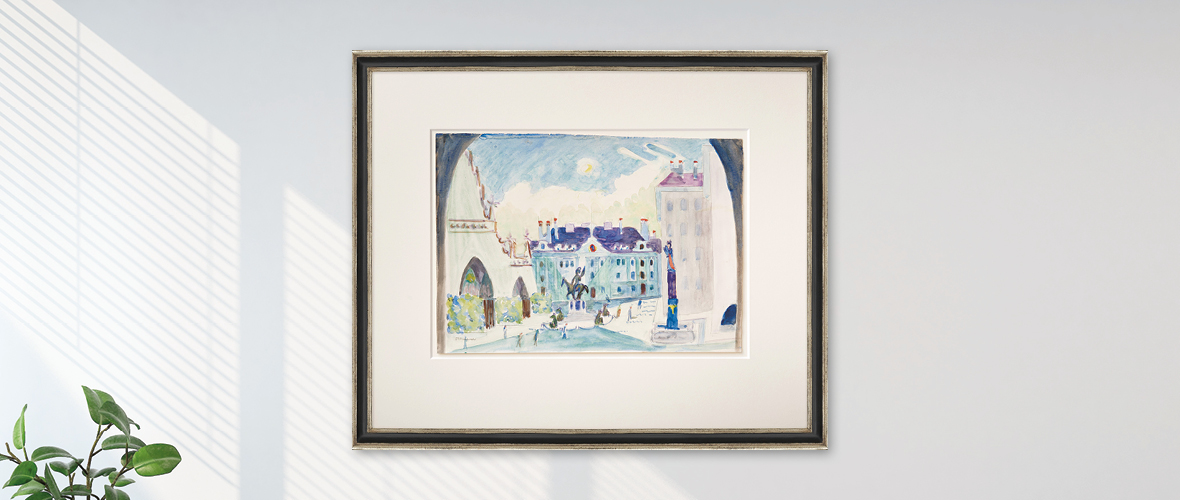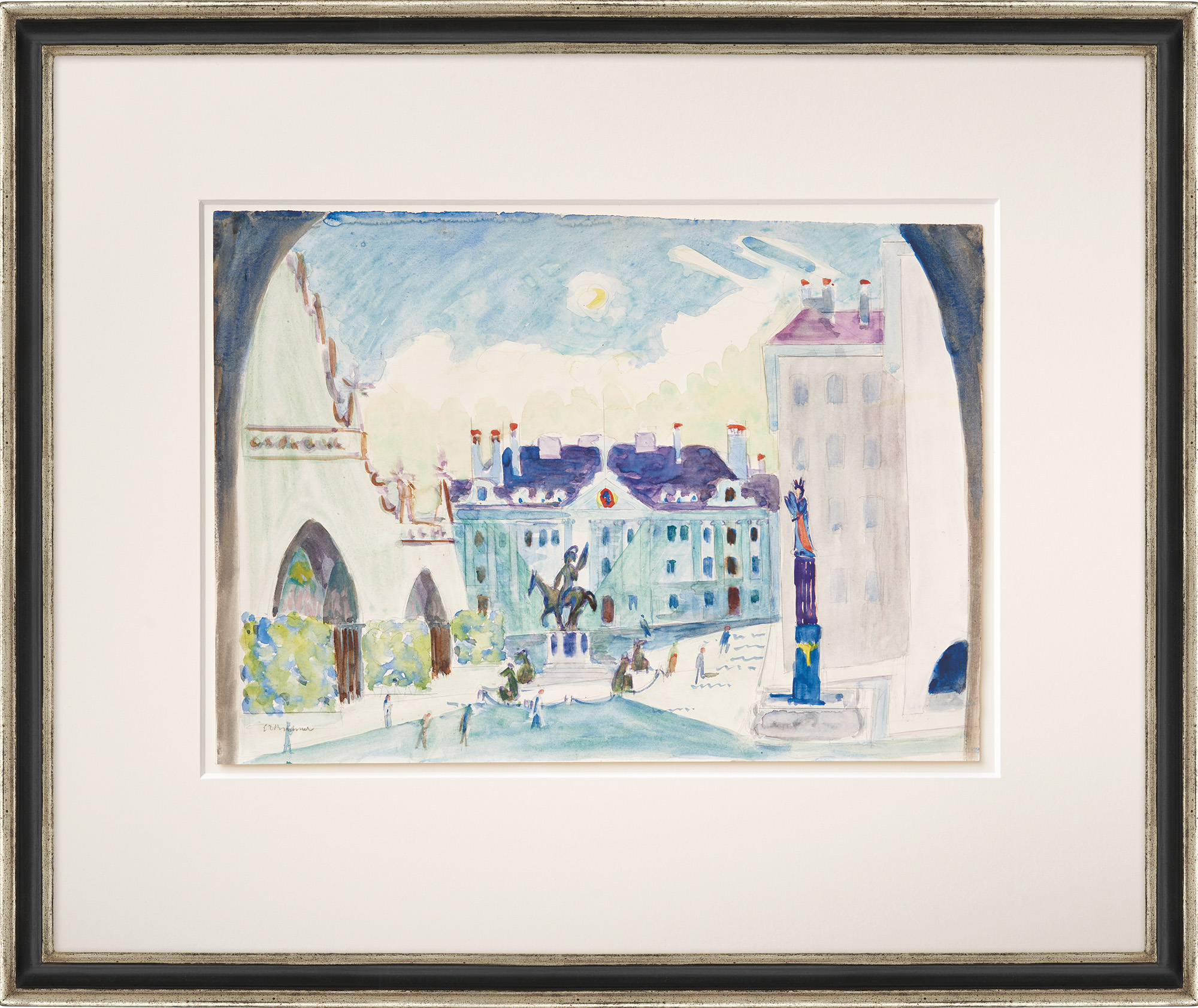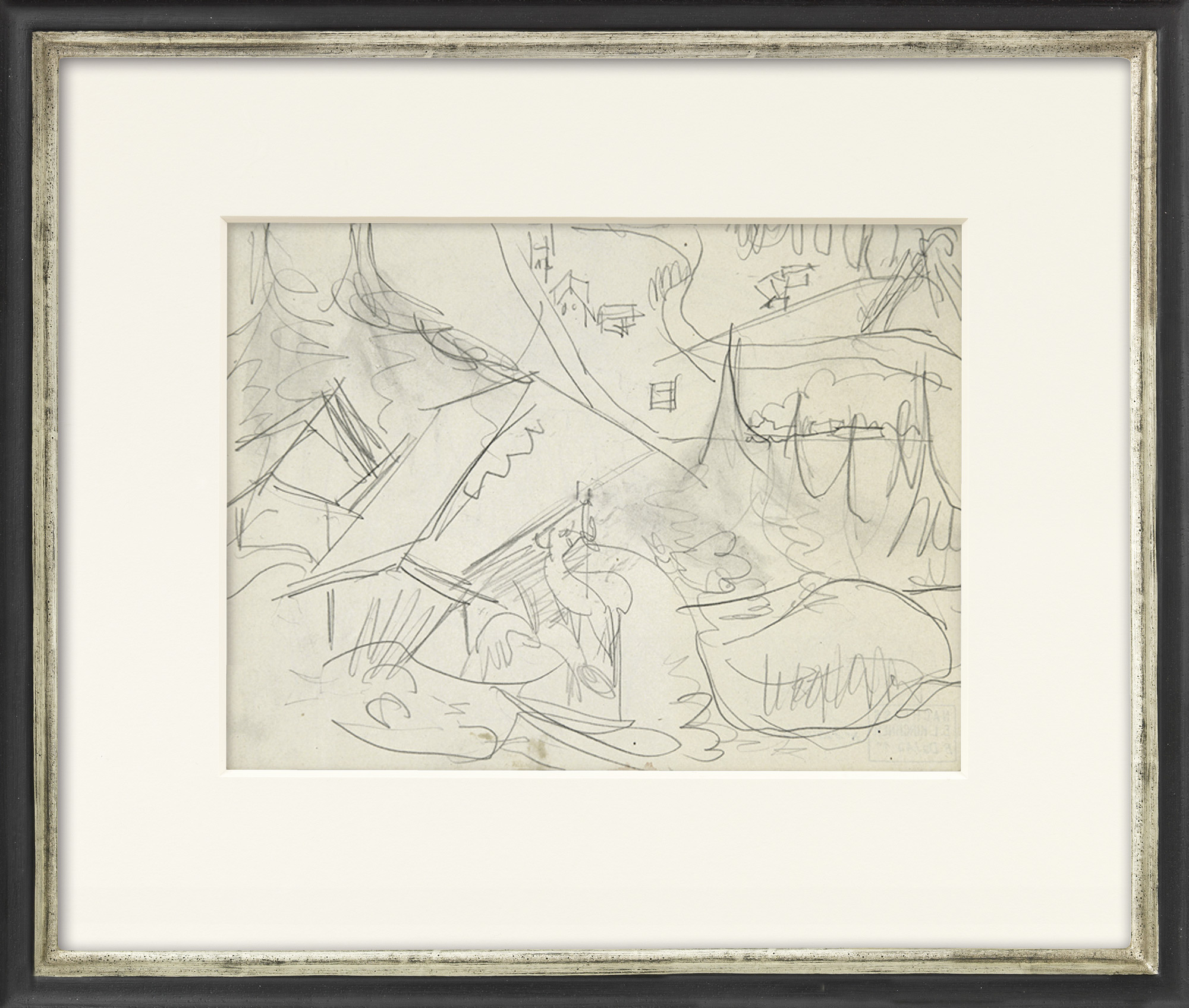
Ernst Ludwig Kirchner and His Time in Switzerland
For over two decades, Ernst Ludwig Kirchner lived in Davos. In the biography of the "Brücke" artist and pioneer of Expressionism, his move to Switzerland in 1917 marks a decisive turning point: Kirchner exchanged the wild city life of Berlin and Dresden for the solitude of the town by the Landwasser in the canton of Graubünden.
In Switzerland, he hoped for an improvement in his critical health condition and found completely new artistic inspirations. One of the absolute highlights of his Swiss period was undoubtedly a major exhibition in Bern in 1933: The local Kunsthalle, under the direction of Max Huggler, organised a retrospective featuring 105 oil paintings, 129 drawings, and 12 wooden sculptures. At the same time, the Gutekunst & Klipstein Gallery in Berne showcased prints, including over 50 woodcuts, etchings, and lithographs. Kirchner travelled to Bern multiple times in preparation for the exhibition.

On that occasion, he created numerous cityscapes, including the view of Münsterplatz with the abbey building, the Rudolf von Erlach monument (which was moved to Grabenpromenade in 1969), and the Moses Fountain, as shown in the image above. By the time of the exhibition, Ernst Ludwig Kirchner had already been living in Switzerland for a long time: In the hope of alleviating his severe mental and physical problems, he had moved to Davos in 1917.
Upon arrival, he rented a very simple hut on the Stafelalp - a true contrast to his "Brücke" time in Dresden and Berlin. The new surroundings also had an immediate effect on Kirchner's choice of motifs. "My days of the circus, the coquettes and society are over," he wrote. Now rural life, the animal world and the unique mountain landscape of the region found their way into Kirchner's work. His style was also to change: The pictures now seemed less nervous and the bright and strong colors were given more and more space.

His integration into the village community, on the other hand, was somewhat slow. Although the locals respected him, they also thought the expressionist from the big metropolis was a bit crazy. In addition, he failed in his attempt to give painting lessons at a school. He drew quickly, highly stylized and chose unusual colors for his motifs. Blue cows - the rural population was not yet ready for that. Today, this is undoubtedly different: the Kirchner Museum Davos and the Ernst Ludwig Kirchner Foundation proudly honor and preserve the work of their famous former fellow citizen.
